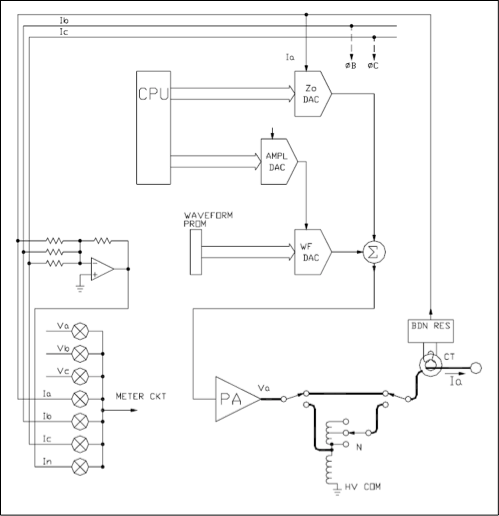What Is Programmable Z?
Hate to disappoint, but programmable Z on an AC power source has nothing to do with getting sufficient sleep. Instead, the Z refers to the output impedance of the power source. A low AC source output impedance means there is little or no voltage drop at the output of the power source when the load current increases. This is obviously a good thing, as it means the voltage will not change under changing load conditions. Load regulation is good in this case. If the output impedance is high, there will be measurable voltage drop at the output of the power source and thus at the load with an increase in load current. Load regulation will be poorer. Generally, the output impedance, or Z, of a power source is determined by the output stage of the DC/AC inverter (single-phase source) or inverters (multi-phase source). It is generally also true that the higher the power rating of the AC source, the lower the output impedance has to be to deliver sufficient current without significant voltage drop.
As we have seen in previous expert blogs, the load regulation feedback loop of a programmable power sources helps keep the output impedance low. A source with a low output impedance is sometimes referred to as a “stiff” source. But what if we want to simulate to a “softer” source or – conversely – study the effect of a stiff source on, say, peak inrush current of our unit under test? To do so, we would need an AC source with programmable output impedance, also known as programmable Z or prog-Z.
The example below shows the difference in current, both RMS and peak, for the same load when using a prog-Z = 0.0 Ohm (off) setting versus a prog-Z = 1.0 Ohm setting. Note the flat topping that occurs with a higher Z setting, indicating a “softer” source. This concept can be used to simulate various utility connection impedance points.

How Does It Work?

Programmable impedance relies on feeding back signal to the output inverter’s control loop that is proportional to the load current. By summing this signal with the error signal that is used to maintain output voltage, the amount of voltage change is now a function of both programmed set value as well as load current. This concept is illustrated in Figure 2.
At low load currents, there is little boost from this current feedback. At higher load currents, the amount of feedback increases, effectively boosting the output voltage to simulate a lower output impedance. Since the level of compensation can be programmed, the output impedance is now programmable.
Why Does It Matter?
Lower output impedance results in higher peak current delivery to the load and less voltage distortion, especially at higher output frequencies where the output inductance of the source’s output filter can result in relative high output impedance.
Due to the “real time” nature of the feature, the programmable output impedance provided by Pacific Power Source UPC controllers supports sub-cycle response times to load induced current demands. The same prog-Z can also improve voltage transient response by requiring less load regulation adjustment than would otherwise be needed.
An additional benefit of prog-Z is the ability to compensate for line losses by programming a “negative” impedance in various test applications.
